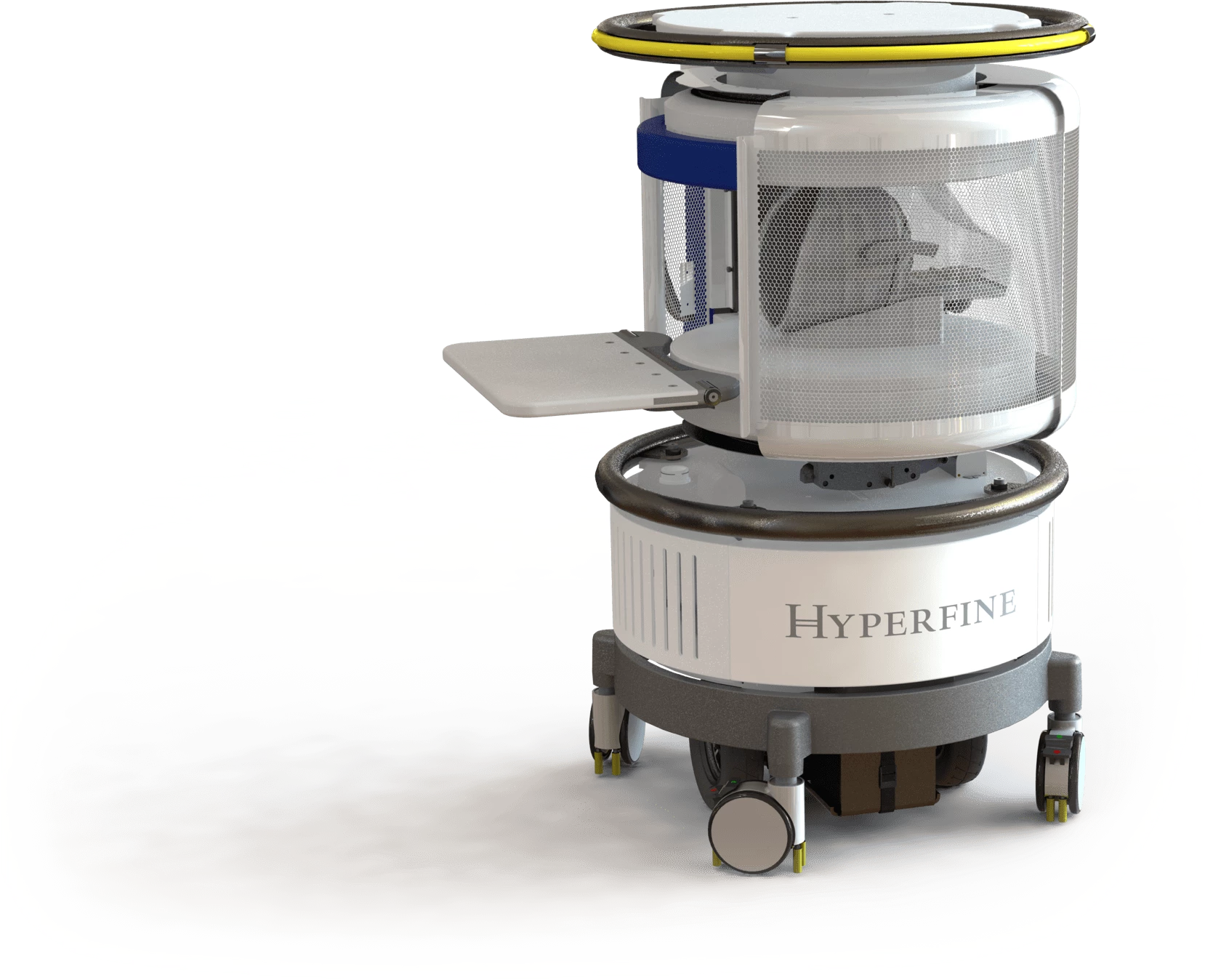A study published in the journal JAMA Neurology is reporting promising results testing the world’s first portable MRI machine in a real-world intensive care setting. The groundbreaking device effectively detected brain abnormalities in almost all patients studied, paving the way for new bedside diagnostic capabilities.
Developed by healthcare technology company Hyperfine, the point-of-care (POC) magnetic resonance imaging (MRI) system was first revealed last year. The device is claimed to be 20 times less costly, use 35 times less power, and is 10 times lighter that current MRI machines.
Traditional MRI machines are big and expensive devices, requiring custom-built rooms to contain the powerful magnetic fields used for imaging. Until recently, the prospect of a portable MRI machine was unimaginable but recent advances in computing power have enabled images to be produced using smaller magnets.
The magnetic fields used in MRI machines are tracked with a unit of measurement called a Tesla (T). Most current MRI machines rely on powerful magnets ranging from 1.5 T to 3 T. Hyperfine’s new POC machine uses a significantly smaller magnet of just 0.064 T.
This means the device can be easily rolled up to a patient’s bedside without deploying any protective measures in the surrounding environment. The machine also uses less electricity than large MRI machines, allowing it to be powered from a standard wall outlet.

In this new study, researchers from Yale Medicine tested the efficacy of the new MRI device in 30 patients admitted to Yale New Haven Hospital’s neuroscience intensive care unit. The new device detected a variety of abnormalities, ranging from brain tumors to ischemic stroke, in 29 of the patients.
The study also took the opportunity to study the neurological effects of COVID-19 in 20 patients admitted to intensive care. The nature of severe COVID-19 means these patients are generally unable to be transported to larger MRI rooms for imaging, so this proof-of-concept analysis suggests the portability of the POC device allows for many more patients to be investigated. Eight out of the 20 COVID-19 patients imaged showed acute neurological abnormalities associated with the disease.

More testing is necessary before the device is commercially rolled out into clinical environments and further studies will need to directly compare these POC MRI results to conventional MRI or CT imaging results. However, Hyperfine is clear in stating this new device is not designed to be a replacement for traditional high-field MRI imaging, but instead is intended to complement those diagnostic tools.
If effectively validated in further tests this portable MRI machine offers profound new diagnostic opportunities for clinicians. In intensive care situations the machine allows for fast assessment of neurological injuries and the novel ability to gather serial measurements introducing temporal imaging profiles of the same patient over several days or weeks.
The mobility of the device also allows for better diagnostics in rural or remote environments. The developers even hypothesize the machine could be integrated into ambulances for mobile patient assessments. This could potentially offer paramedics the ability to immediately diagnose stroke symptoms before a patient even gets to a hospital.
Speaking to STATNews last year, Hyperfine’s chief medical officer John Martin suggested the machine opens up incredible possibilities that could never have been considered, even a few short years ago.
“Now, the cool thing is that when you get this in front of doctors, they look at it, they start thinking about all kinds of creative ways in which they can use that,” Martin said in 2019. “You know, the thought of this now being in a van floating around Africa, that’s a mind-blowing concept, no one would ever dream of that at all. That’s actually possible.”
The new study was published in the journal JAMA Neurology.
Source: Yale News





